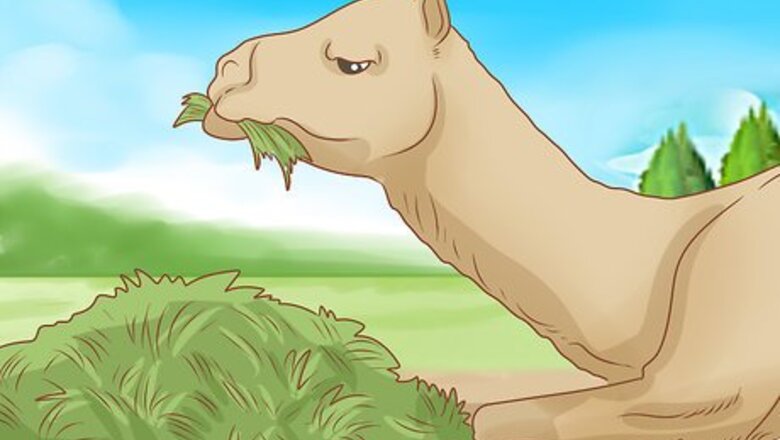
views
Feeding and Nourishing
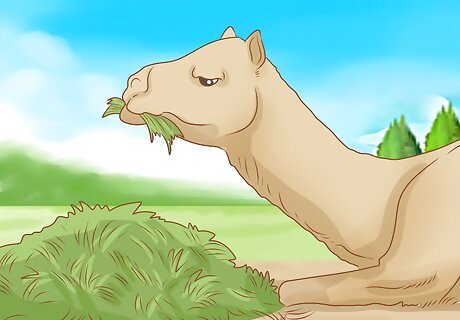
Feed them as much Bermuda hay as they can eat. Oats and grains are far too rich for a camel's diet, as camels are used to nutrient-poor desert scrubs. Alfalfa, which they love, is also much too rich, but can be used as a treat in small bunches. In place of Bermuda hay, you can use any other grass-like, dry hay for food. However, Bermuda is your best bet. Feeding camels costs about as much as it costs to feed a horse. Expect to drop about $250 a month feeding an adult camel. If the camel has grass and shrubs in their field, this is a supplement to their diet. It can not replace regular feeding.

Make sure they have access to salt. Sodium is incredibly important in a camel diet. Camels should have constant access to a salt lick, which you can buy at any store that sells horse supplies. You can also get chunks of salt that they can chew, or hanging "salt treats." In general, these smaller chunks are easier for a camel to lick than a large block. No matter your style, make sure your camel can access this crucial nutrient source.
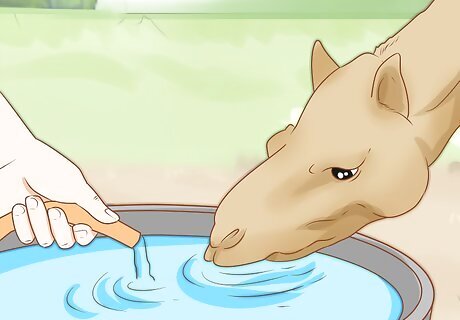
Give them fresh, clean water every day. Camels may not drink if the water isn't clean. Run the hose into their bowls each day so that they get fresh water and nothing is stagnant. While camels have a reputation for needing only a little water, this is only for trained camels accustomed to desert life. The more water you can get them, the better.

Ensure that your camel gets their required supplements. These can be easily given to them with a treat, such as a handful of alfalfa pellets, carrots, or apples. A standard horse multi-vitamin, with vitamin B, potassium, etc. — will generally do. You also want a selenium supplement, and plenty of vitamin E. Talk to your veterinarian, however, about the exact amounts for your camel. If you have powdered supplements, try wetting the treats with water or apple cider vinegar. This helps the powdered supplements stick to the treats. Some camel-specific salt blocks have selenium in them as well. These two nutrients are perhaps the most vital for your camel's health.
Housing and General Care
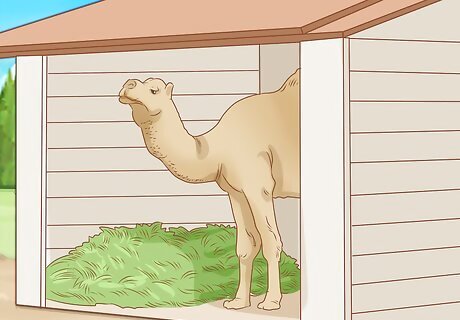
Construct or purchase a camel hut. A tiny stall is not going to cut it for a camel. It must be big enough for the camel to move, eat, sleep, lie down, and be happy. It should be big enough that they can turn around completely with ease and are sheltered from the rain and weather. If you offer them a large enough area (generally one or more acres) to explore, you can get away with a smaller hut. In these cases, huts would only be a place to get shelter from bad weather.
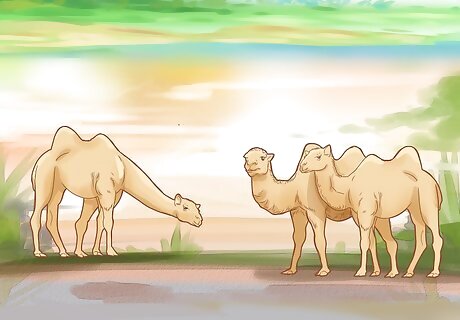
Clear out a large, open space for your camel to move around in. Camels are big and need some room to live. A yard with some grass is highly advised, although is not a must. The more room you can create for your animal, the better. In general, at least a half-acre should be enough. But if you have multiple camels, you'll need more room so they don't get into trouble with each other. Camels are notoriously tough on fences. An electrified wire is usually your best bet to contain them.
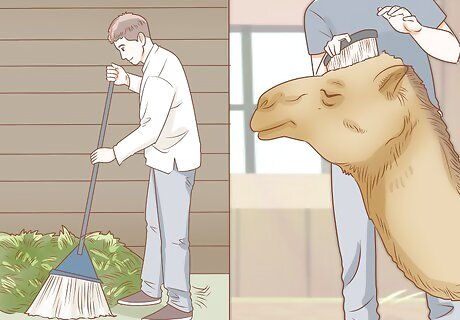
Clean up after your camel. Camels are quite clean animals and hate to be in a mess. Clean up their dung in their hut and/or yard weekly, and make sure to do full cleanings regularly. Comb and brush out your camels' fur, and keep their living spaces clean as best you can.
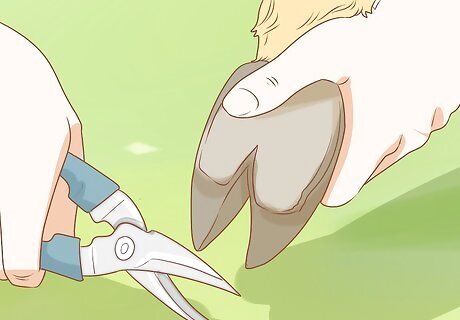
File down their nails if they become too long. This shouldn't be too frequent, but camels' nails can get long and land uncomfortably when they walk. On hard, rocky ground this shouldn't be a problem — the ground will naturally file their nails. But if you have them on softer soil, keep an eye out for any nails that seem to drag along the ground or catch underneath them. If you're on soft soil, you'll need to train your camel to raise its feet to check and file them. A large metal file will suffice to grind their nails down.
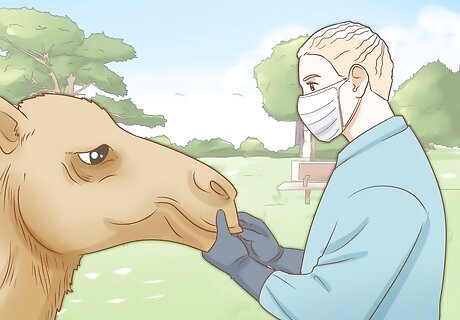
Set up regular veterinary visits. Shoot for at least one consultation per year, or whenever an issue arises. Camels need a variety of shots and protections to stay healthy, including: Deworming Vaccinations for the clostridial diseases and tetanus Periodic checking and floating of teeth. If showing or traveling with your camel, check to see your required shots, vaccinations, and certifications.
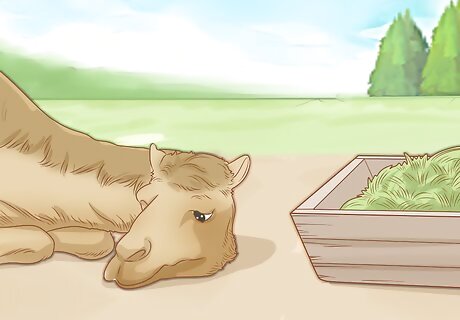
Know how to check if your camel is sick. Camel illnesses can be difficult to diagnose, but there are several symptoms that require immediate assistance from a vet: Soft and/or squishy hump. Refusal to eat. Temperature (checked rectally) less than 99 degrees or over 103 degrees Fahrenheit for more than 2-3 days in a row. Worms or parasites in feces.
Training and Building Respect
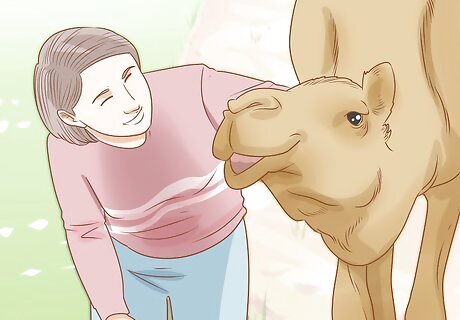
Always treat camels with respect, especially when you first get them. Camels are massive, dangerous animals if not handled properly. Make sure that you are firm and in control, but don't try and rile up the animal or hurt them when they misbehave. Positive reinforcement (a treat for good behavior) is always your best bet. Camels are smart, social, and affectionate animals. Treat them as such and they will become dream pets.
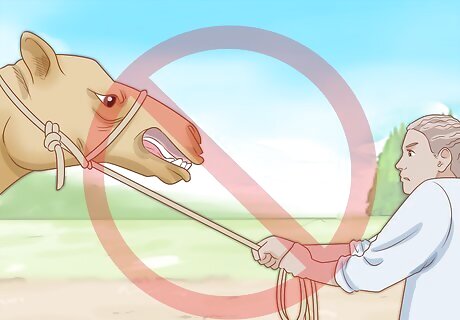
Don't roughhouse or play harshly with young camels. This will train them to roughhouse with you all the time. It may be fun when they're young and cute, but it can get dangerous once they weigh a ton and are over seven feet tall. If they panic or get spooked, stay calm and confident. Speak gently and keep your hands on the reins. They will follow your lead.
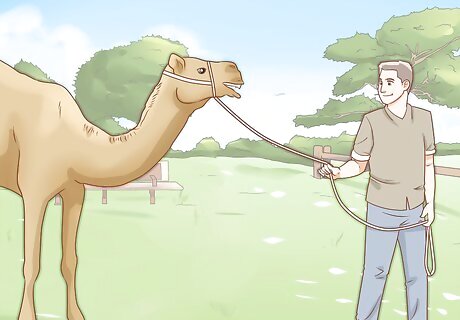
Take charge and push the camel firmly in the direction you want it to go. They should generally follow your lead. Start this behavior early so they get used to you as the "alpha camel." Push firmly along their neck and back, and they should move away from you.
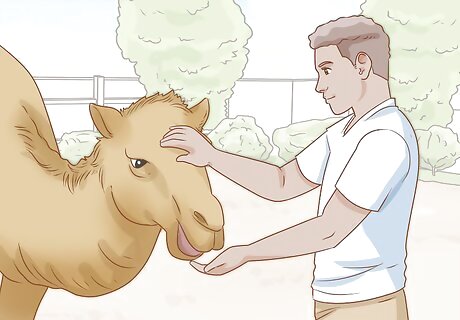
Train them with treats to build positive behavior. Reward good behavior with treats — a slice of apple, a carrot, a bunch of alfalfa — as these intelligent beasts respond well to positive reinforcement. The younger you start, the easier this will be. You want them trained before they are too massive to push around. When they do something you like, pet them and give them a bit of a treat. If they don't follow instructions, just be neutral until they get it right. You don't want to spook it and get angry. Get them comfortable in the harness when they are young. They may resist it at first, but they will quickly grow accustomed when they realize it won't hurt them.
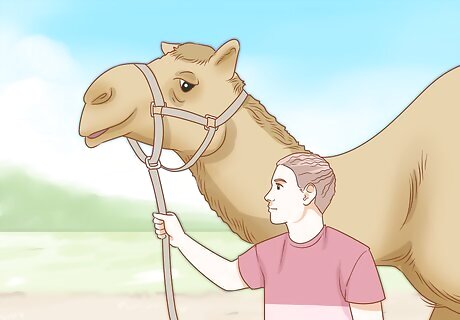
Train them with a halter from a young age, leading them on walks. A halter, similar to the ones worn by horses, is a good idea to help you control and train your camel. They can be purchased at specialty shops. Use it to walk your camel from a young age, getting it used to follow you and stopping on your command. To teach them to stop, pick your word (like "stop") and then use your body to physically stop them while you say it. Give them a treat when they comply. Other essential skills include: Lifting feet so that you can check them. Sitting down. Coming to you when called.
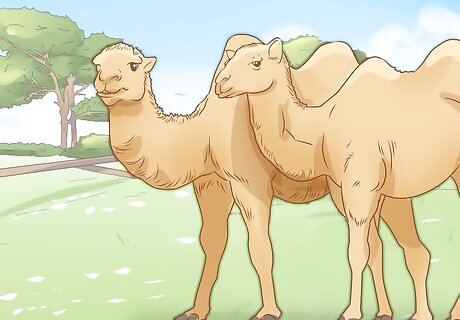
Keep your camel company, as they are very social animals and need companionship. Camels are herd animals. They like company and will oftentimes feel lonely if they are all alone. Consider buying another camel, but only if you can easily handle the responsibility. Camels generally do well with dogs and sheep as well, and will bond with most people. They are very affectionate animals, and even constant visits from you will do them good.


















Comments
0 comment